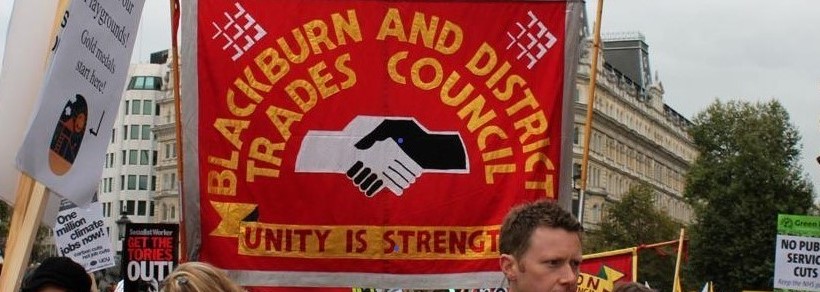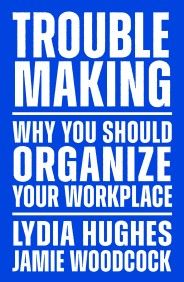Last May the Department for Business and Trade reported that the proportion of British employees who were Trade Union members had fallen to 22.3% in 2022 – down from 23.1% in 2021. This was the second successive year where the proportion had declined, and these years represented the lowest two British union membership rates on record.
Research shows that outcomes for workers organised into Trade Unions are better in areas such as pay and Health and Safety. Sarah Glenister, the National Development Officer at the Institute for Employment Rights, has commented that: “Much contemporary research has linked strong trade unions to higher economic productivity, lower economic inequality, and better social mobility. The result is a healthier population, a happier population, with lower levels of crime” (“Tribune”, October 2019). But, still, many British workers remain unorganised.
Writing in the NIESR Report “Trade Union Membership and Influence, 1999-2014” (published in 2015) John Forth and Alex Bryson commented that: “The percentage of all employees who have never been a member of a trade union has risen continually over the past 20 years such that, by 2009-10, over half of all employees were ‘never-members’……… In 2014, almost three-fifths (58 per cent) of employees were located in non-union workplaces, with this figure being particularly high in private sector service industries, such as ‘Accommodation and food service’ and among young workers. Employees’ direct and indirect experience of unionism is therefore receding”.
There was a big fall in membership in the last decades of the 20th Century. According to Stephen Machin “Union Decline in Britain” (May 2000) “In 1979, 53 percent of workers were union members; by 1999 this had fallen to 28 percent. In 1980 around 70 percent of employees’ wages were set by collective bargaining; by the mid-1990s this had sharply fallen to less than 45 percent”.
Much of this can be attributed to Britain’s late 20th Century de-industrialisation. Workers rarely give up on their Unions if they are in an organised industry – but members are lost when the industries themselves are run down, and it is far harder to set up Unions in “new” industries, particularly when these have been designed to have a fragmented and insecure workforce.
The “cost of living” crisis has seen a period of renewed willingness by Trade Union members to try Industrial Action, which has, in turn, given Unions more of a public profile. There has also been quite a surge in books about Trade Union organisation.
One of them – “Troublemaking: Why You Should Organise Your Workplace” Troublemaking – Verso (versobooks.com) – was co-authored by Jamie Woodcock (a University of Essex lecturer with experience in UCU and IWGB), and we were pleased that he could join us (online) at our October meeting to speak about it.
Jamie told us that “Troublemaking” was not so much a “how to” guide as a “why be in a Trade Union” encouragement. It did, nevertheless, describe and draw upon practical experience from different countries and occupations: waste collectors in Mumbai, cleaners at LSE and St Mary’s hospital in London, and Sans-papier workers in France. It tried to distil from these experiences some idea of what organising requires in terms of attitude and orientation, alongside the basic practicalities.
Although Jamie did not use the distinction himself, it seems fair to say that his focus was on Unions as “purposeful combinations” rather than as “service providers”.
He highlighted three ideas that the book was built around.
First there was the proposition that we ought to drop the practice of referring, rather apologetically, to industrial action as a last resort. That didn’t mean striking at the drop of a hat, but it did mean habitually being prepared to put collective pressure on employers to achieve specific objectives. These did not have to be big wins, but it helped to build a record of positive results.
Secondly was a focus on building rank-and-file involvement and capacity. Unions should be about us organising ourselves, not relying on others to do things for us. Jamie seemed to regard the official structures of Unions as a necessity that required close supervision, and that it was easy for official structures to fall out of touch with workplace concerns. He said that this could apply to lay officers on full facility time as much as to paid officers.
Finally, he argued that Union democracy was fundamental to mainlining this rank and file vitality and addressing the inevitable tensions between the organisation and specific groups of workers. It was particularly difficult when new activists began to realise that Unions themselves were a made up of competing viewpoints and affinities which it could be necessary to navigate in order to muster support.
Our subsequent discussion covered issues such as how lay facility time could make the Union’s connection with a workforce stronger, especially in large and complex organisations, on how union organisation grew in unorganised workplaces and on whether or not we faced a generational issue and a particular problem of involving young workers.
Thomas A. Kochan et al., “Worker Voice in America: Is There a Gap Between What Workers Expect and What They Experience?”ILR Review72, no. 1 (January 2019): 3–38 found that even in the United States of America, where Trade Union density is even lower than it is in Britain, almost half of non-union workers polled in 2017 (48%) said they would join a union in their workplace tomorrow if they got the chance. We don’t know if any similar work has been done here, but, as Jamie pointed out, the most common reason British workers give for not being in a Union is that “nobody asked them”. It is not unreasonable to suppose that more British workers would be in a Union if they felt that they had the chance.
That chance has historically come from both above – when governments have signalled that they want workers to engaged in collective bargaining – and from below. One of the striking aspects of the case studies in “Troublemaking” is how often significant things have been achieved because, initially, just one person got the ball rolling. But even though there often is a single individual responsible for starting the organization process, none of them would have achieved anything if it were not for the courage and dedication of the colleagues who joined them. Jamie commended and drew our attention to the work of “Organise Now” – Organise Now! Support for new worker organising – which puts people who express an interest with those who have experience in organising in their sectors. This is something we shall discuss further at our November meeting.

